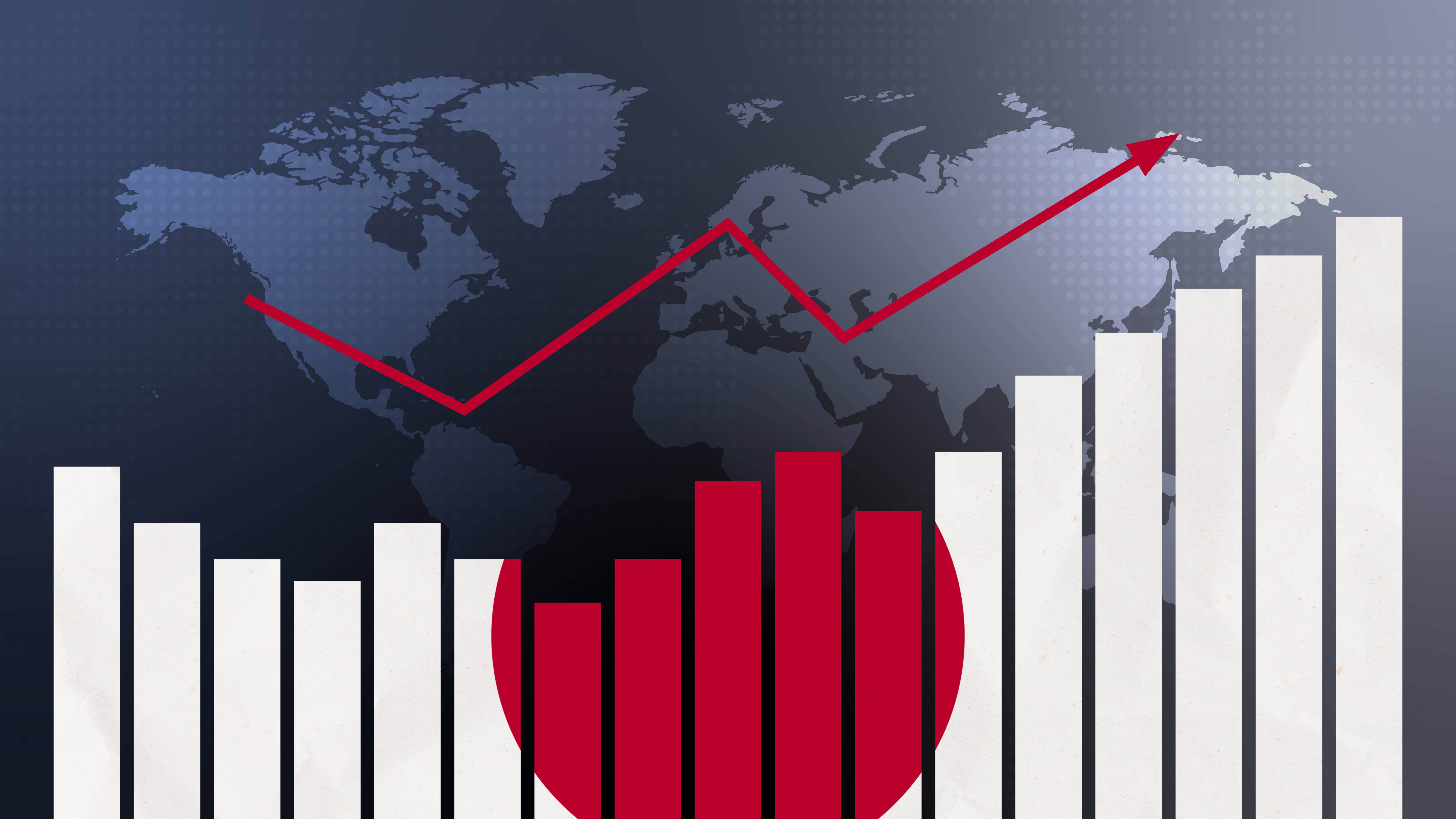
- Article
- Macroeconomics, Economic Policy
Reimagining the Central Bank: New Frontiers in Monetary Policy
February 10, 2021
How can monetary policy keep its effectiveness when faced with zero-bound interest rates? Senior Fellow Hideo Hayakawa takes a look at the challenges and opportunities confronting the world’s central banks.
* * *
In a previous article, I examined the changing role of the central banks amid the COVID-19 pandemic, highlighting a shift in focus from interest-rate manipulation and inflation targeting as tools of macroeconomic stabilization to the use of central-bank funds to prop up the financial system and finance emergency lending and spending programs. In the following, I will take a closer look at the long-term conditions hobbling monetary policy and some of the more innovative ways in which central banks are seeking to break free of those constraints.
The Challenge of Low Interest Rates
The COVID-19 pandemic is not the only force driving the shift in the role of central banks. In the background looms the long-term challenge of persistently low interest rates, which have seriously dampened the efficacy of traditional monetary policy. In this respect, the central banks of all the leading industrial economies are confronting the same dilemma that has bedeviled the Bank of Japan for so many years now: a decline in the natural (or neutral) rate of interest, the theoretical rate at which savings and investment are in equilibrium under full-employment.[1]
The decline in the natural rate of interest is a symptom of the long-term drop in economic growth rates in the industrialized world. In the past few years, this phenomenon has received considerable attention, thanks in part to the work of Lawrence Summers, who revived the term “secular stagnation” to describe it. Whether one traces the problem to factors on the demand side (such as the low level of real investment by big tech firms, the high rate of savings in the emerging economies, and growing economic inequality) or the supply side (such as population decline and the slowdown in the rate of innovation), the essential feature of secular stagnation is a decline in the natural rate of interest.
As a rule, monetary policy, viewing the natural rate of interest as a given, strives to steer market interest rates above or below that neutral rate to heat up or cool down the economy. For example, during recessions, central banks typically move to lower short-term market rates below the natural rate to stimulate economic activity and spur growth. But today’s very low natural rates give the central banks little room in which to maneuver (unless they can push market rates well below zero, which is not a realistic option in a cash economy).
Of course, even without such policy space, central banks could potentially spur growth just by raising inflation expectations, since economic behavior responds to real interest rates. But this, too, is exceedingly difficult in today’s climate of persistently low inflation—as evidenced by the failure of the BOJ’s program of “quantitative and qualitative monetary easing.”[2] Despite the BOJ’s bold attempts, Japanese wages and prices have barely risen in recent years, even amid the historically low levels of unemployment posted prior to the pandemic.
In this challenging environment, some of the world’s leading central banks have begun shifting their focus from price stabilization to more farsighted goals. Such policy initiatives may seem elusive, but from a macroeconomic standpoint, they could have an impact on the natural rate of interest. If the central banks succeed in raising this rate, they could also regain their ability to stimulate the economy using the conventional tools of monetary policy.
Let us take a closer look at some of the ways in which the central banks are reimagining their mission.
The ECB and Climate Change
In monetary policy, the natural rate of interest is usually considered a given, determined by the saving and investment behavior of the public and private sectors. The central bank restricts itself to manipulating market rates in relation to the natural rate.[3] However, it might also be possible, in cases of market or goverment failure, for the central bank to influence the natural rate of interest in a way that promotes long-term economic welfare.
The most closely watched development in this connection is the European Central Bank’s proposed purchase of green bonds—debt instruments issued to raise funds for environmental initiatives. ECB President Christine Lagarde, who served as managing director of the International Monetary Fund until 2019, is well known as a crusader against climate change. But the idea of a green shift in monetary policy—including the possibility of “green QE”—only began to gain serious traction after ECB board member Isabel Schnabel communicated her support for the concept in September 2020. Such market intervention runs counter to the orthodoxy of monetary policy, which insists that the central bank remain neutral with regard to the allocationn of resources. However, Schnabel and others have suggested that it may be time to rethink such strictures, in view of the manifest “market failure” of climate change.
In a coordinated move, the European Commission President Ursula von der Leyen has pledged to make “green recovery” programs a pillar of the EU’s economic policy going forward. The ECB’s purchase of green bonds would help fund this green recovery, of course, but the upswing in investment attending the green recovery could also benefit the ECB by raising the natural rate of interest, thus enhancing the efficacy of monetary policy. Given Prime Minister Yoshihide Suga’s pledge to achieve net zero carbon emissions by 2050, it is conceivable that the Bank of Japan could follow suit.
Natural Interest Rates and Potential Growth
This might be a good time to interject a word of caution about the relationship between the natural rate of interest and the economy’s potential growth rate. To be sure, from a long run viewpoint, the two are closely and inextricably linked. However, over the short run, there is no guarantee they will move in lockstep. Governments have long used investment in public works to jump-start economic activity, and while such spending tends to push up the natural rate of interest over the short run, it does not necessarily boost the potential growth rate. (Indeed, in Japan, the government’s reliance on inefficient public-works projects to stimulate economic growth in the 1990s had the opposite effect of depressing the potential growth rate.)
More recently, Japan’s economic policymakers have shifted their emphasis to digital transformation and green investment as the pillars of future growth. But the effects of these two policies on the natural rate of interest could be very different.
It seems reasonable to suppose that digitalization can raise productivity and thereby boost the potential growth rate to some degree, although experts differ as to the magnitude of the effect.[4] Certainly one can expect that Japan, which has thus far lagged behind in digital transformation, will see gains in productivity once it catches up. But there is no guarantee that digitalization will push up the natural rate of interest. After all, Summers and others have pointed to the rise of big tech as a factor behind the imbalance between saving and investment that has pushed down the natural rate of interest. Tech firms tend to build up internal reserves instead of investing, having little need for real investment.[5] At the same time, the rise of the information economy has had the effect of further concentrating wealth, leading to an increase in the personal savings rate.
Conversely, while a push toward green investment by the public and private sectors is likely to raise the natural rate of interest over the short term, its effect on the potential growth rate is unclear, given the constraints that environmental regulations place on economic activity.
The Fed and Income Inequality
How, then, has the Federal Reserve Board responded to today’s low-interest environment and the attending constraints on monetary policy?
In August 2020, the Fed announced updates to its Statement on Longer-Run Goals and Monetary Policy Strategy. There is nothing in the revised statement to suggest that the Fed is contemplating a substantive change in its functions; to the contrary, the gist of the revision is a stepped-up commitment to achieving 2% inflation by targeting the average rate over time, thus opening the door to “overshooting.”
As I have argued previously, it seems excessively optimistic to expect this symbolic gesture to affect the rate of inflation in the absence of any novel tools for achieving the target, particularly when one considers the failure of the BOJ’s QQE program.[6] Recent statements by Fed Chair Jerome Powell and other board members stressing the need for further fiscal outlays to stimulate the economy suggest that the Fed itself has little confidence in its own ability to make any further impact.
However, there are some indications that the Fed may begin proactively targeting the problem of economic inequality. President Joseph Biden has promised to work with the central bank to address the racial wealth gap and other issues of economic equity.
Moreover, a paper titled “Distributional Considerations for Monetary Policy Strategy,” published by the Fed in connection with the August strategy revision, makes the case for aggressive inflation targeting from the standpoint of the distribution of wealth. Using a heterogeneous agent new Keynesian (HANK) model to analyze the redistributive effect of various monetary policies, the paper concludes that sustained monetary easing should yield employment gains that “would generate disproportionate improvements for historically disadvantaged households” and, further, that the reduction in income inequality would strengthen the macroeconomic impact of monetary policy.
Overall, the paper seems designed to lend support to the Fed’s policy decision of August 2020. But it also suggests a more fundamental rationale for the new target: reducing income inequality to boost the natural rate of interest, in line with Summers’ suggestion that growing inequality has contributed to the drop in the natural rate.
Empirically, there is some evidence to support the notion that lower-income earners were the main beneficiaries of record low unemployment in Japan and the United States prior to the COVID-19 pandemic. In Japan’s case, the effect was seen in a decline in the share of nonregular employees; in America’s, in more jobs for minority groups.
The problem with the new Keynesian models, however, is that they fail to take account of changing asset prices (or, if they do, ignore the possibility of an asset bubble). The fact is that, in the pre-pandemic economy, wages were barely rising for middle- and lower-income workers even with unemployment at historic lows. At the same time, the wealth of high-income households was growing at a fast clip thanks to rising stock and other asset prices. Recent history suggests that even sustained super-expansionary monetary policies may fail to mitigate income inequality and raise the natural rate of interest.[7]
The BOJ and Higher Education
The Bank of Japan, by all appearances, has lost its enthusiasm for unorthodox monetary easing. Shortly after the pandemic hit, the BOJ took bold measures to help stabilize global financial markets and stepped in to support emergency loans to small and medium-sized businesses. It also announced that it was suspending its upper limit on purchases of Japanese government bonds. Yet its actual purchases of 10-year JGBs peaked at an annual pace of somewhere between ¥10 trillion and ¥20 billion, and its purchases of exchange traded funds fell substantially from its previous pace of about ¥12 trillion a year.
In other words, the BOJ has reverted to its pre-pandemic mode of “normalization by stealth,” quietly weaning the market from QQE. (At its December 2020 monetary policy meeting, the BOJ decided, as expected, to extend its corporate finance support program and announced its intent to review and assess the options for “sustained and effective monetary easing” to achieve the thus-far elusive 2% inflation target, though the substance of the review remains unclear.)
Meanwhile, with the University of Tokyo scheduled to issue its first bond offering this year, an economist friend of mine asked me about the possibility of the BOJ investing in university bonds. At first, it struck me as an odd idea. But after consideration, I began to see the logic. The Japanese government is facing a fiscal crunch amid soaring social security costs (an inevitable result of demographic aging), but there is strong resistance to further tax hikes. Spending on higher education and research has taken a major hit, and it does not take a Nobel laureate to realize that, over time, this is likely to affect the caliber of science and engineering in Japan. Politically speaking, however, it is difficult to justify allocating more for education and research at the expense of other priorities. Perhaps this is an area in which the central bank could justify intervening to compensate for a “failure” of government policy.
From the BOJ’s standpoint, this may not be such a stretch. As early as 2010, Japan’s central bank had expanded its policy framework by incorporating a pioneering financing program to “help strengthen the foundations for economic growth.” In retrospect, this, too could be understood as an effort to boost the natural rate of interest.
Of course, it remains to be seen whether such innovative policies will have their intended effect. But it is scarcely the central banks’ first foray into uncharted waters. The quantitative easing and negative interest rates of recent years were also experiments whose outcome was uncertain. We now realize that they incur significant side-effects: quantitative easing undermines fiscal discipline (never mind the eventual damage to the central bank’s finances, which are ultimately borne by the taxpayers), while negative interest rates erode the profitability of private financial institutions.
Investment in green funds and university bonds are, likewise, untested strategies for central banks. But in terms of likely side-effects, such programs strike me as far less risky than QE. (The University of Tokyo, one might point out, has received a very high bond rating.) Moreover, if they do succeed in raising the natural rate of interest, the payoff could be substantial. In short, I would suggest that central banks have relatively little to lose and much to gain by exploring these new frontiers of monetary policy.
[1] For estimates of the natural rate of interest in the United States, see the Federal Reserve Bank of New York, Measuring the Natural Rate of Interest, www.newyorkfed.org/research/policy/rstar. For Japanese trends, see Shigeaki Fujiwara et al., “Developments in the Natural Rate of Interest in Japan,” Bank of Japan Supplementary Paper Series for the Comprehensive Assessment (2), October 18, 2016, www.boj.or.jp/en/research/wps_rev/rev_2016/rev16e12.htm/.
[2] In the September 2016 Bank of Japan Review, the BOJ stressed that the formation of inflation expectation is largely “adaptive,” thus acknowledging the failure of QQE to alter inflation expectations in the face of the market’s recent experience. See Kousuke Nishino et al., “Developments in Inflation Expectations over the Three Years since the Introduction of Quantitative and Qualitative Monetary Easing (QQE),” Bank of Japan Supplementary Paper Series for the Comprehensive Assessment (1), October 14, 2016, www.boj.or.jp/en/research/wps_rev/rev_2016/rev16e13.htm/.
[3] Ordinarily, the target of manipulation is short-term interest rates, but under the BOJ’s yield curve control, the focus shifted to long-term rates. The Fed’s forward guidance on future interest rates has also put the spotlight on longer-term interest rates. This trend relates in part to the growing role of the central banks in financing government spending.
[4] Economist Robert Gordon of Northwestern University has argued persuasively that recent developments in information technology have done far less to boost productivity than the second industrial revolution, ushered in by electric power and the internal combustion engine.
[5] The big tech multinationals (such as Google, Apple, Facebook, and Amazon) have spent enthusiastically on mergers and acquisitions, but the purchase of a preexisting business does not create new assets for the economy and is not a new investment from the standpoint of the macroeconomy.
[6] See www.tkfd.or.jp/en/research/detail.php?id=757.
[7] Until fairly recently, there was considerable support for a “high-pressure economy,” the idea that a sustained super-expansionary monetary policy could boost the potential growth rate or the natural rate of interest. Former Fed Chair (current Secretary of the Treasury) Janet Yellen made some statements to that effect, and in 2017 several BOJ officials seemed to embrace the story. In the years since then, however, the potential growth rate and natural rate of interest have continued to decline in the United States and Japan alike.








